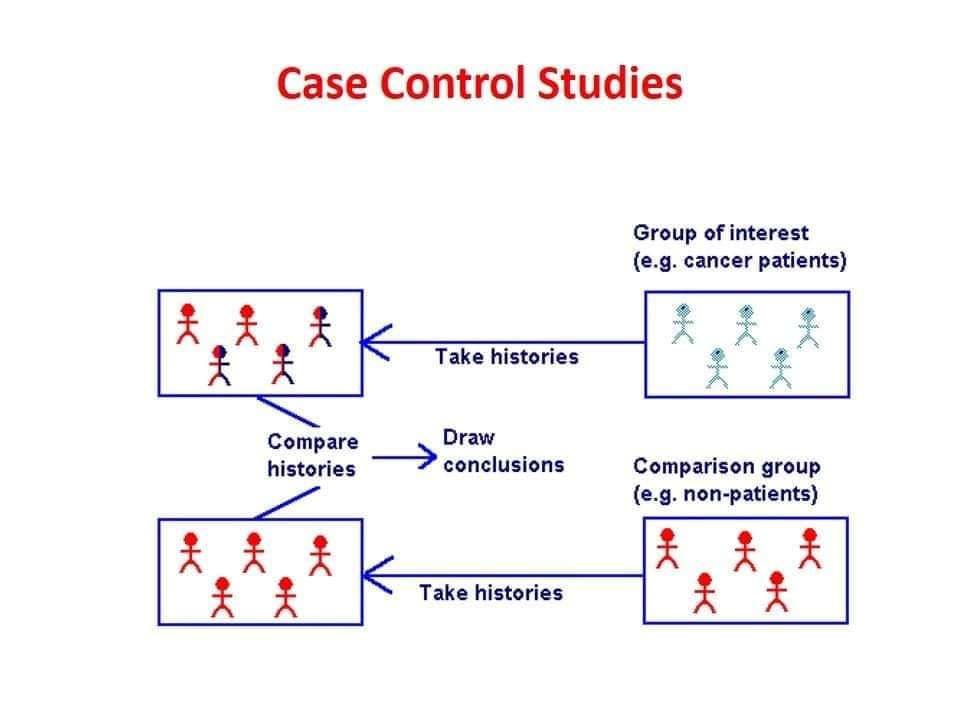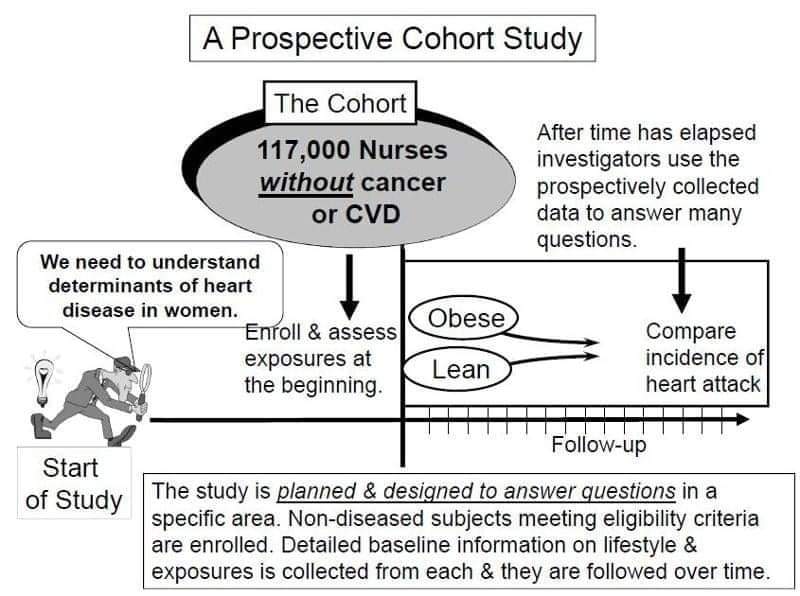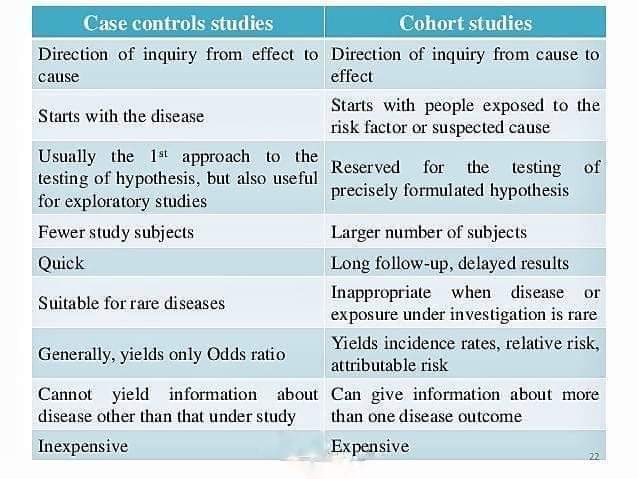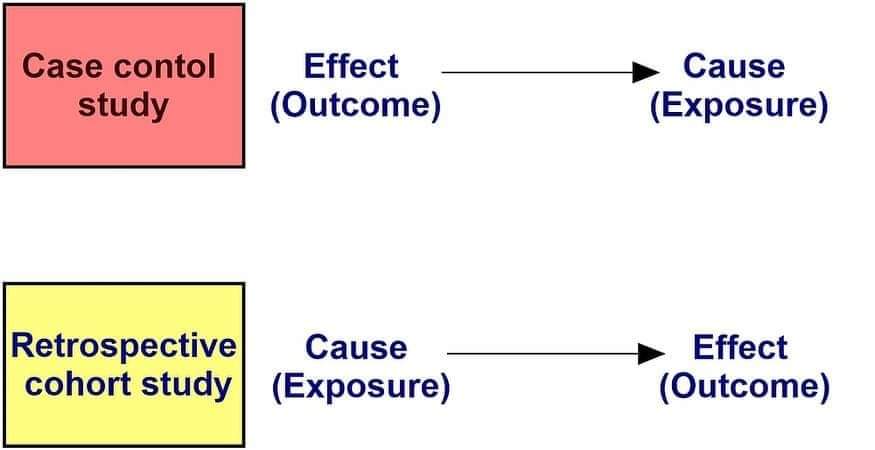♦ Cases:-
Persons in the population or study group, having a condition under investigation (condition may be a disease, a response, an effect, a problem & outcome).
♦ Controls:-
Non-cases but similar in every other respect to the cases in the study.
♦ Case Control Study:-
In case control studies, the unit is the individual rather than a group. The focus is on a disease or some other health problem that has already developed.
CASE CONTROL STUDY মানে এখানে কিছু Case ( with disease ) থাকবে এবং কিছু control ( without disease) থাকবে, যারা same risk factor দিয়ে exposed। তারপর analyse করা হবে, ঐ Risk factor টার সাথে disease টার association কতটুকু।

♦ Basic Steps of Case Control Study
1)Selection of Cases:-
🔹️ Diagnostic criteria:- Based on the sign / symptoms, laboratory investigation, report এর উপর ভিত্তি করে diagnostic criteria set করে নিতে হয়।
🔹️ Eligibility Criteria:- Only newly diagnosed cases (recall bias avoid করার জন্য একটি নির্দিষ্ট বয়সের রোগীদের exclude করা হয় ।)
Sources of Case:-
🏐Hospital
🏐General population :-
• Survey method
• Disease registry
• Hospital network
2) Matching:- (Control selection এর সময় Case এর সাথে match করে নিতে হয়। যেমনঃ Age, sex, Occupation ।)
3) Selection of controls:-
• Free from disease.
• Must be similar to the cases as much as possible.
Sources of controls:-
• Hospitals (রোগীর সাথে Attendance হিসেবে যারা থাকে।)
• Relatives (Genetic inheritance এর ক্ষেত্রে avoid করতে হবে ।)
• Neighbours
• General population
4) Measuring the exposure:- Data collection করতে হবে both case & control by
• Interview
• Questionnaire
• Old records [Hospital or Employment area]
5) Analysis & interpretation :-
• Exposure [Lung cancer এর ক্ষেত্রে smoking] rate টা Case এর মধ্যে কেমন, control এর মধ্যে কেমন সেটা দেখতে হবে।
• Estimation of disease risk associated with exposure (odds ratio).
♦ COHORT STUDY:
Cohort মানে হলো group।
এখানে group of people নেওয়া হয় যাদের same risk factor আছে। তাদেরকে long period ধরে study করা হয়, যে তাদের মধ্যে Specific disease টা develop করে কিনা ।Comparison হিসেবে নেওয়া হয় general people যাদের ঐ risk factor এ exposure নাই।
তাই বলা যায়,
✅ It proceeds from CAUSE to EFFECT (PROSPECTIVE STUDY).
✅ Suitable for RARE EXPOSURE. (exposure থেকে outcome দেখা হয়)


🔶️ Elements/Steps of a cohort study:-
1)Selection of Study components:- Selection of study group from special groups. Eg. Doctors, Nurse, teachers.
2) Obtaining data on exposure :-
• Information may be obtained personal interview or mailed questionnaires.
• Review of records
• Medical examination
3) Selection of comparison groups:–
• Internal comparisons
• External comparisons
• Comparisons with general population rates
4) Follow Up:-
• Telephone calls
• Periodic home visits
• Review hospital records
• Mailed questionnaires
5) Analysis :-
• Incidence rate of outcome among exposed & non-exposed
• Estimation of risk
♦ Advantages of cohort studies:-
🔹️ Incidence rate can be calculated
🔹️ Dose-response ratios can also be calculated
🔹️ Several possible outcomes can be studied
🔹️ Chance of bias is minimum
♦ Disadvantages of Cohort Studies :-
🔹️ Unsuitable for investigation of uncommon disease
🔹️ Long time to complete the study & obtain results
🔹️ Expensive
🔹️ Loss of experienced staff, loss of funding & extensive record keeping are inevitable
⛔ Differentiate between Case Control & Cohort Study –

Tabirul Islam
Shaheed Syed Nazrul Islam Medical College, Kishoreganj
Session:-2017-2018
প্ল্যাটফর্ম একাডেমিক / রাবেয়া আহমেদ

